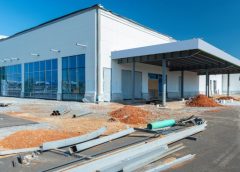As an entrepreneur, having your company’s name on a commercial property is a dream. However, there’s much more to building a commercial property than looking at blueprints and purchasing a plot. It takes a lot of planning, financing, and decision-making to ensure that your investment is worth the journey. Apart from finding a location and listening to the much-needed amenities, you should consider the other elements involved in the process.
Simplify your planning with these four helpful tips for building a commercial property.
Before Building: Evaluate Your Options
Are you sure you want to build from the ground up? A construction project is a major commitment that’s time consuming and requires your full attention. You may consider hiring a project manager to oversee the process, but you’ll still have to make decisions and lead daily operations. If you think building a commercial office may be too costly, consider renting or purchasing an existing property.
Get the Right Building Permits and Documents
One of the most important tips to remember when building a commercial property is to have the proper documents, licenses, and permits. With a permit, you can avoid expensive fines and delays. You also won’t have your operation shut down. Building requirements and licenses vary from state to state and even between counties or cities. Make sure that you’re within guidelines to prevent any trouble.
Invest in a Good Architect or Building Designer
Here’s the fun part: building your commercial property’s model! It’s essential that you invest in a reputable architect or building designer. Your property’s look is the first impression for many potential business partners and supporters. With a building designer, you can lay out your property and make logical and aesthetically based decisions. For example, they can help you choose a centralized cluster mailbox installation or luxurious amenities to include within your property.
Avoid Making Last-Minute Decisions
One of the worst things you could do when building a commercial property is to make last-minute decisions. Everyone involved in the building process is on a timeline, and other operations may get delayed when they’re behind. To ensure everything runs smoothly, look through your design plans multiple times and make changes before handing in the finalized blueprint.





